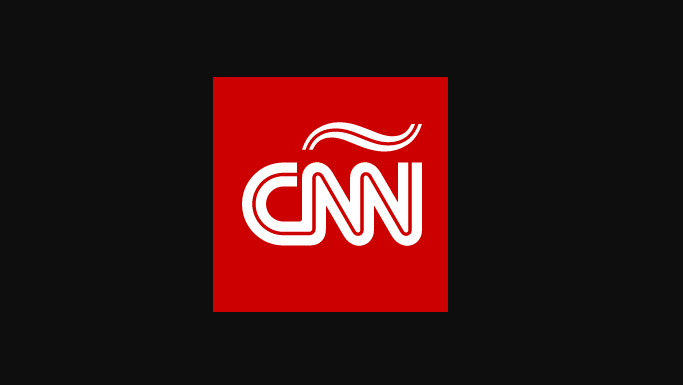In the crowded digital landscape, creating great content is only half the battle. The real challenge lies in getting that content seen by your target audience. Content promotion is crucial for amplifying your message and driving engagement. In this post, we’ll explore ten effective content promotion strategies and provide practical examples to help you maximize your reach.
Social Media Marketing
Social media is a powerful tool for content promotion. Leveraging platforms like Facebook, Instagram, Twitter, and LinkedIn can help you reach a wide audience and drive traffic to your content.
- Facebook Ads: Facebook’s advanced targeting options allow you to reach specific demographics based on interests, location, and behaviors. For example, a fashion brand could use Facebook Ads to target users interested in fashion and accessories, promoting their latest blog post or product launch.
- Instagram Stories: Instagram Stories are a great way to engage your audience with visual content. Use Stories to share snippets of your blog posts, behind-the-scenes looks, or teaser content. For instance, a travel blogger might use Instagram Stories to share highlights from a recent trip, driving traffic to their full blog post.
- LinkedIn Posts: LinkedIn is ideal for B2B content promotion. Share industry insights, articles, and company updates to engage with professionals in your field. For example, a marketing agency might post a summary of their latest white paper on LinkedIn, driving traffic to the full report.
Email Marketing
Email marketing remains one of the most effective ways to promote content. Building a robust email list and crafting targeted campaigns can help you nurture leads and drive engagement.
- Personalized Newsletters: Segment your email list based on interests and preferences to deliver personalized content. For example, an e-commerce store might send tailored product recommendations based on previous purchase history, along with links to relevant blog posts.
- Automated Email Campaigns: Set up automated campaigns to promote new content or re-engage inactive subscribers. For instance, an online course provider might create an automated series of emails to promote new courses and highlight relevant blog posts.
Influencer Partnerships
Partnering with influencers can amplify your content’s reach and credibility. Influencers have established audiences that trust their recommendations, making them valuable allies in content promotion.
- Sponsored Posts: Collaborate with influencers to create sponsored posts that highlight your content. For example, a tech company might work with a tech influencer to review their latest product and link back to a blog post detailing its features.
- Influencer Takeovers: Allow influencers to take over your social media accounts for a day, sharing content and engaging with your audience. This can drive traffic to your content and increase brand visibility. For instance, a food brand might have a popular chef take over their Instagram account to share recipes and promote their blog.
SEO Optimization
Optimizing your content for search engines is crucial for driving organic traffic. By incorporating SEO best practices, you can improve your content’s visibility in search results.
- Keyword Integration: Research relevant keywords and integrate them naturally into your content. For example, if you’re writing a blog post about digital marketing strategies, use keywords like “digital marketing,” “SEO,” and “content promotion” throughout the post.
- Meta Descriptions: Craft compelling meta descriptions that summarize your content and include target keywords. A well-written meta description can improve click-through rates from search engine results. For example, a blog post on email marketing strategies might have a meta description like, “Discover effective email marketing strategies to boost engagement and drive conversions. Learn from real-life examples and expert tips.”
Paid Advertising
Paid advertising can provide a significant boost to your content promotion efforts. By investing in targeted ads, you can reach a broader audience and drive traffic to your content.
- Google Ads: Create targeted Google Ads campaigns to drive traffic to your content. Use keyword targeting and ad extensions to improve visibility. For example, a software company might use Google Ads to promote a blog post about their latest product features, targeting keywords related to their software.
- Social Media Ads: Utilize social media advertising options to reach your audience on platforms like Facebook, Instagram, and LinkedIn. For example, a fitness brand might run a Facebook ad campaign promoting a new blog post on workout tips, targeting users interested in fitness and health.
Content Syndication
Syndicating your content to other platforms can increase its reach and drive additional traffic. By republishing your content on reputable sites, you can attract new audiences and improve visibility.
- Republishing on Medium: Medium is a popular platform for content distribution. Republish your blog posts on Medium to reach a broader audience and drive traffic back to your original content. For example, a marketing agency might republish their blog posts on Medium to attract new readers and generate leads.
- Partnering with Content Networks: Partner with content networks or syndication services to distribute your content to a wider audience. For instance, a tech company might use a content syndication network to share their blog posts with technology-focused websites and publications.
Guest Blogging
Guest blogging is an effective way to promote your content and reach new audiences. By contributing to other blogs, you can showcase your expertise and drive traffic back to your site.
- Writing for Industry Blogs: Offer to write guest posts for industry blogs or websites. This allows you to share your insights with a new audience and include links back to your own content. For example, a financial advisor might write a guest post on a personal finance blog, linking back to their own website for more information.
- Participating in Expert Roundups: Join expert roundups or contribute to industry-related discussions. This can help you gain exposure and drive traffic to your content. For instance, a digital marketing expert might participate in a roundup of marketing tips, linking to their own blog for additional insights.
Webinars and Live Events
Webinars and live events provide opportunities to engage with your audience in real-time. They can also be used to promote your content and drive traffic to your website.
- Hosting a Live Q&A: Organize live Q&A sessions to address audience questions and promote your content. For example, a health coach might host a live Q&A on nutrition and wellness, linking to relevant blog posts for more detailed information.
- Conducting a Product Demo Webinar: Use webinars to showcase your products or services. For instance, a software company might host a webinar demonstrating their latest features, driving traffic to their blog for further details.
Partnerships and Collaborations
Strategic partnerships and collaborations can enhance your content promotion efforts. By working with other brands or influencers, you can expand your reach and drive traffic to your content.
- Co-Authored Content: Collaborate with other experts to create co-authored content. This allows you to leverage each other’s audiences and drive traffic to both parties’ websites. For example, a travel blogger might co-author a guide with a destination expert, linking back to both of their websites.
- Joint Marketing Campaigns: Partner with other brands for joint marketing campaigns. This can include co-branded content, cross-promotions, or joint events. For instance, a fashion retailer might collaborate with a beauty brand for a joint social media campaign, promoting both brands’ content.
Repurposing Content
Repurposing content allows you to get more mileage out of your existing material. By transforming content into different formats, you can reach new audiences and drive additional traffic.
- Turning Blog Posts into Infographics: Create infographics from your blog posts to present information visually. This can help you reach audiences who prefer visual content and drive traffic back to your original post. For example, a digital marketing blog might turn a detailed post on SEO tips into an engaging infographic.
- Creating Videos or Podcasts: Convert your blog posts into videos or podcasts to reach different audiences. For instance, a financial expert might create a video series based on their blog posts, sharing insights through engaging video content.
Case Studies and Success Stories
To illustrate the effectiveness of these strategies, let’s look at a few success stories:
- Case Study 1: E-Commerce Brand – An e-commerce brand used a combination of social media marketing, email campaigns, and influencer partnerships to boost their product launch. By leveraging these strategies, they increased their website traffic by 50% and saw a 30% increase in sales.
- Case Study 2: SaaS Company – A SaaS company utilized SEO optimization, paid advertising, and content syndication to promote their new software. Their efforts resulted in a 40% increase in organic search traffic and a significant boost in lead generation.
Common Mistakes to Avoid
While implementing these strategies, be mindful of common pitfalls:
- Neglecting Audience Research: Ensure that your content promotion strategies align with your target audience’s preferences and behaviors.
- Overlooking Analytics: Track and analyze the performance of your content promotion efforts to make data-driven decisions and optimize your strategies.
Measuring Success
To gauge the effectiveness of your content promotion strategies, track key metrics such as:
- Engagement Rates: Monitor likes, shares, comments, and interactions with your content.
- Conversion Rates: Measure how many users take desired actions, such as signing up for a newsletter or making a purchase.
- ROI: Calculate the return on investment for paid advertising and other promotional efforts to ensure they are delivering value.
Effective content promotion is essential for reaching and engaging your audience. By leveraging these ten strategies, you can boost your content’s visibility, drive traffic, and achieve your marketing goals. Experiment with different approaches, track your results, and refine your strategies to maximize your success.

.jpg)
.jpg)







 English (US) ·
English (US) ·